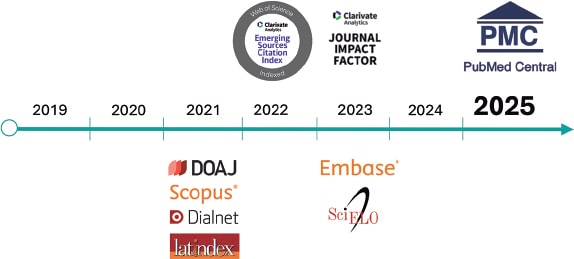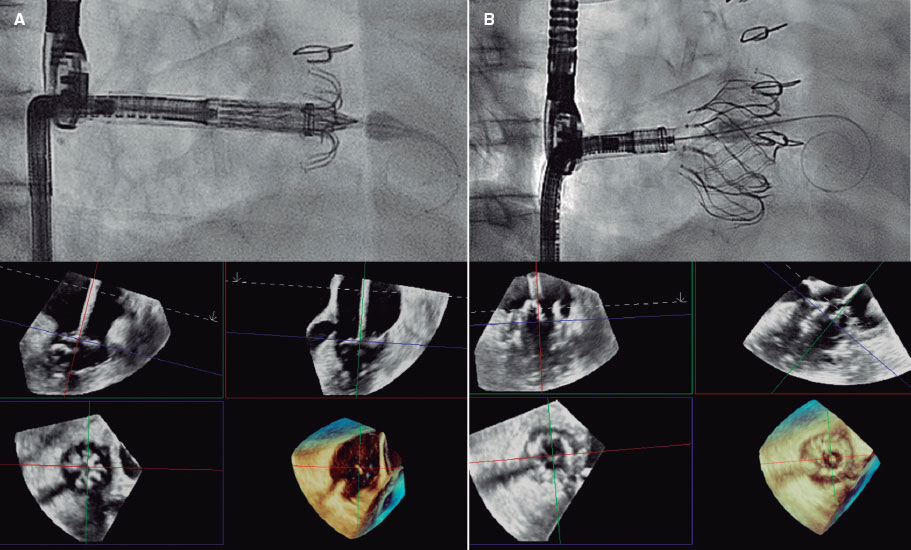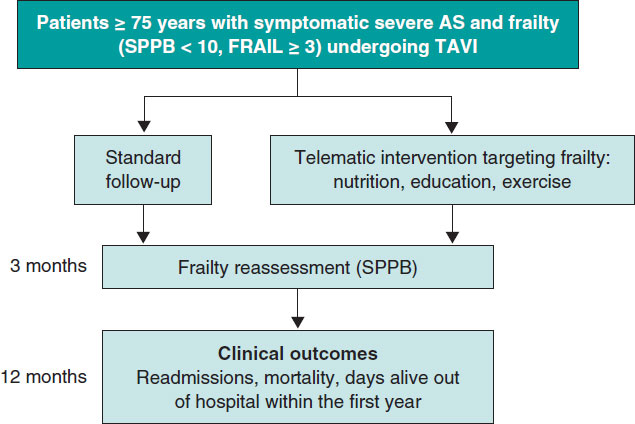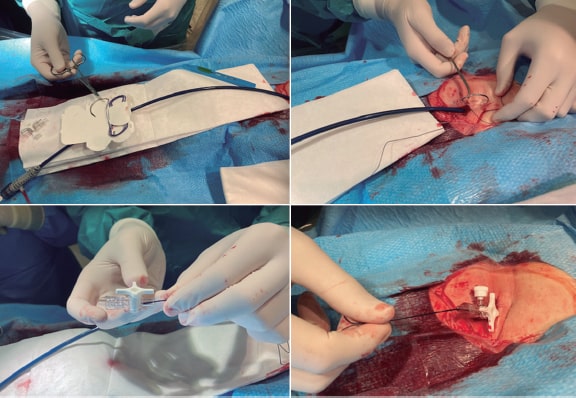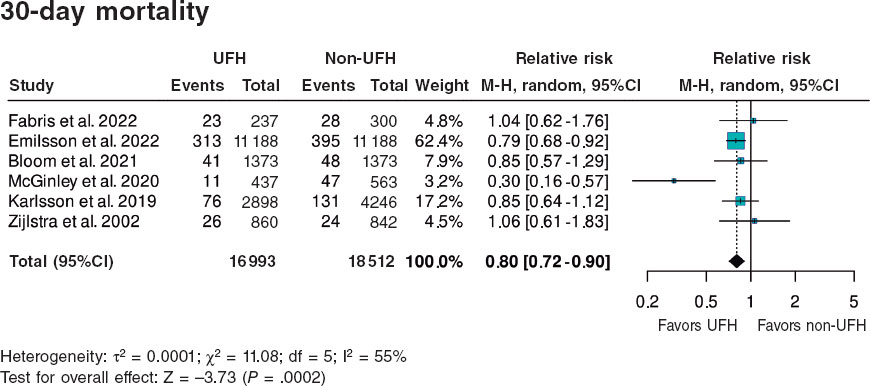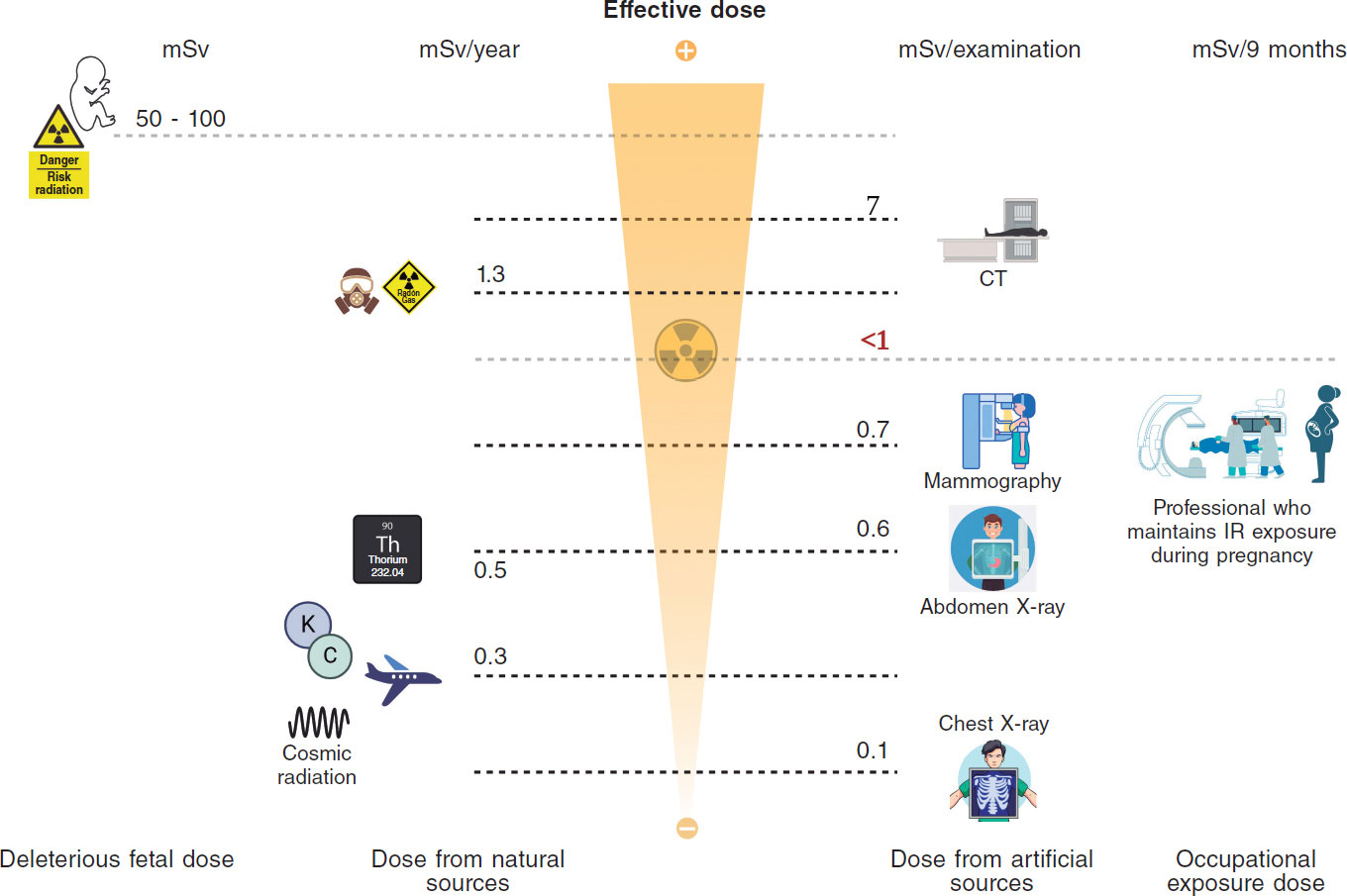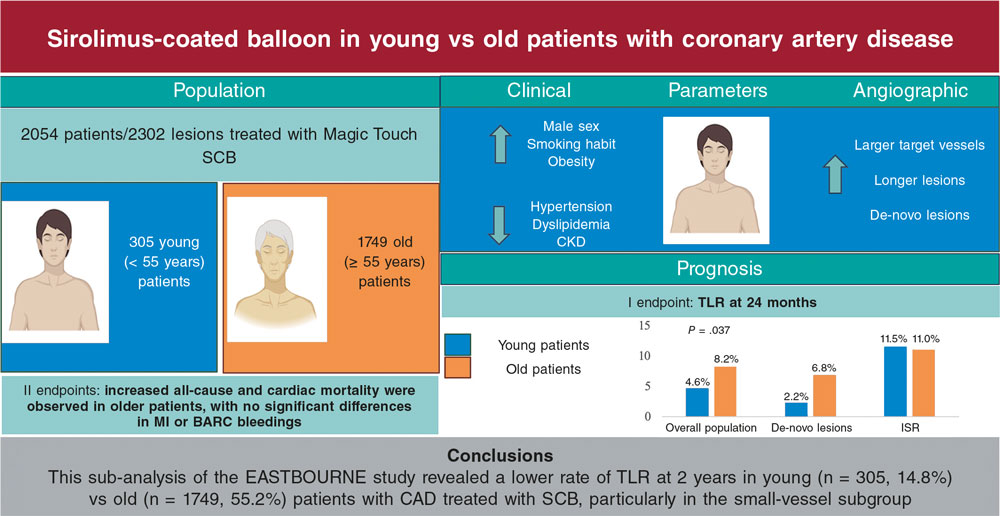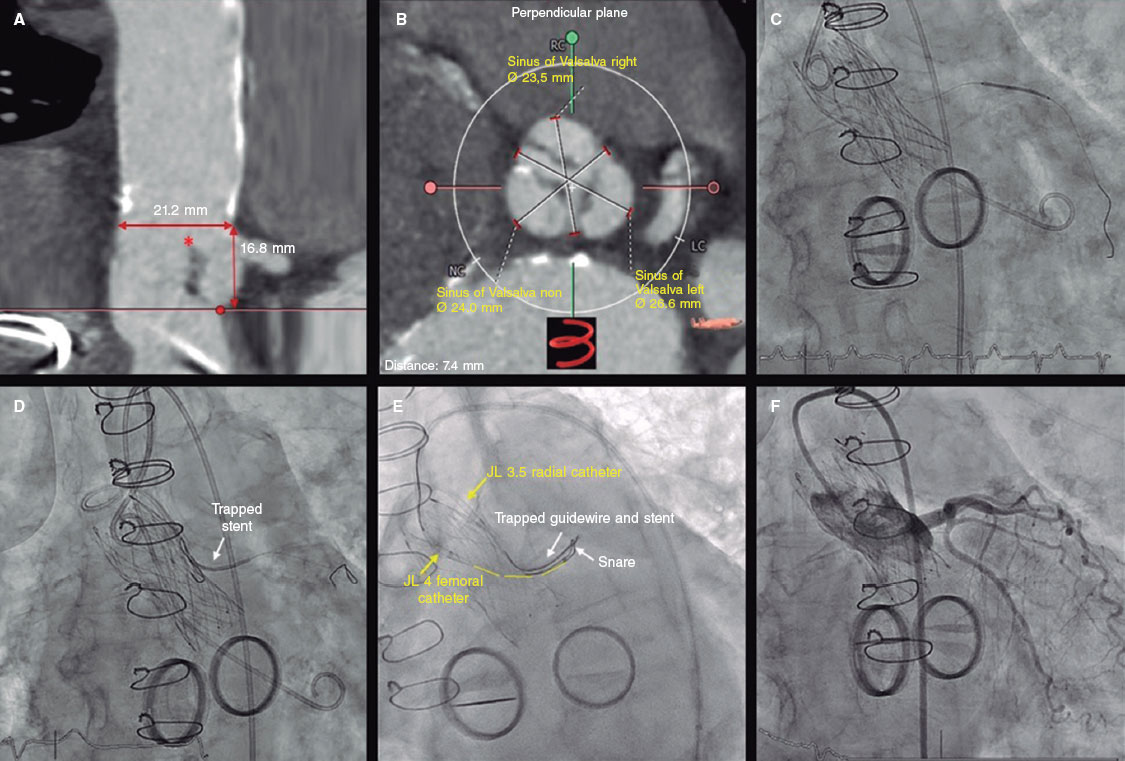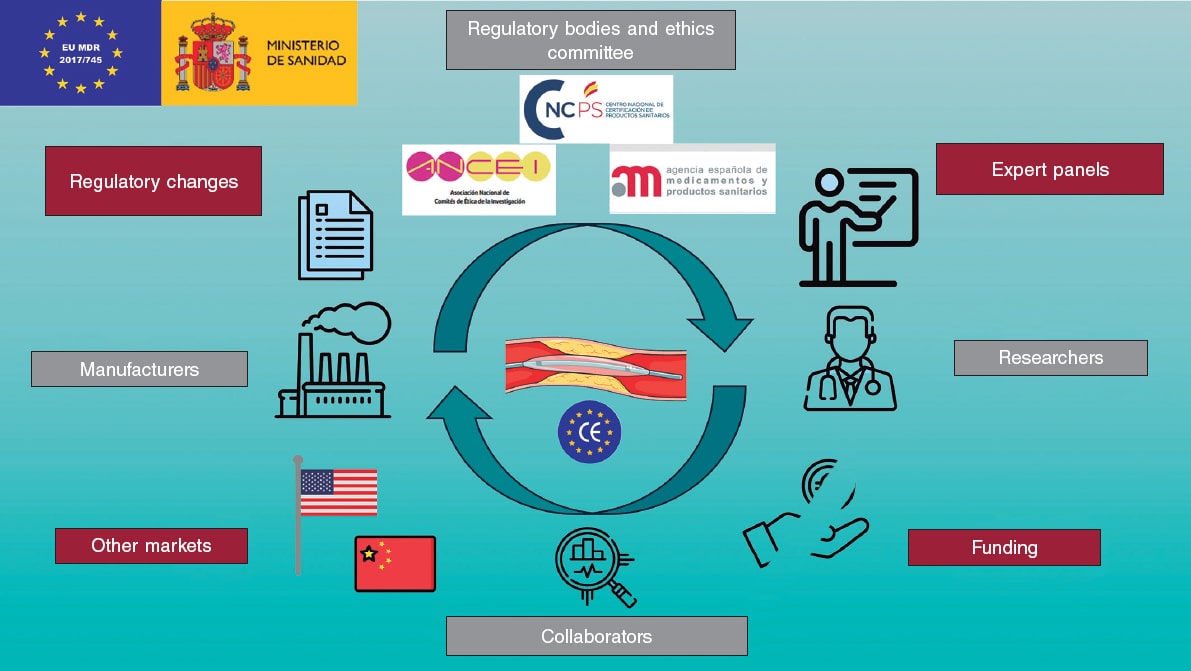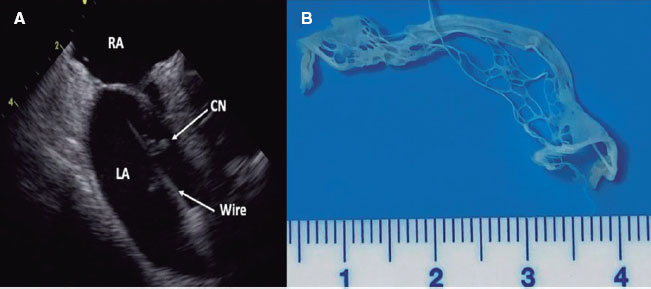To the Editor,
In cardiac surgery intensive care unit (CICU) the use of short-term mechanical circulatory support is increasingly common, such as venoarterial extracorporeal membrane oxygenation (VA-ECMO). The implantation of this device is almost always peripheral and involves the cannulation of a large-bore femoral arterial access. For this reason, vascular complications are a very common finding in patients on peripheral VA-ECMO1 with decannulation being one of the most critical moments.
Currently, there are 2 types of vascular closure devices widely used in the cath lab: suture-based devices, such as the ProGlide (Abbott Vascular, United States), and collagen plug devices, such as the Angio-Seal (Terumo Corporation, Japan) and the Manta (Teleflex, United States). The latter has been specifically designed for the closure of large-bore arteriotomies using an intra-arterial anchoring system and an extra-arterial collagen plug, and is marketed in 2 different sizes: 14-Fr (for 10-14-Fr introducer sheaths and holes with an external diameter of up to 18-Fr) and 18-Fr (for 15-18-Fr introducer sheaths and holes with an external diameter of up to 25-Fr). Evidence in the field of structural heart procedures with the Manta device is very extensive2 and there is increasing experience in closing the arterial access of mechanical circulatory support systems,3,4 although its use is not yet fully widespread in this field.
We report here the experience of a single center using the Manta device for arterial decannulation in patients on femoral peripheral VA-ECMO. Previously, in all cases, the implantation had been performed in the cath lab, guided by fluoroscopy or ultrasound, and by personnel specialized in interventional cardiology. The need for distal perfusion cannula implantation to prevent lower limb ischemia of the arterial cannula was evaluated individually in each case. Afterwards, patients were admitted to the CICU following the usual protocols for critically ill cardiac patients. Finally, in patients with a favorable weaning test, the VA-ECMO removal could be performed percutaneously or surgically, depending on availability and at the discretion of the treating medical team, withdrawing anticoagulation, at least, 4 hours prior to the procedure.
In cases where percutaneous closure with the Manta device is chosen, once the arterial cannula of the ECMO has been clamped and the console is turned off, the cannula is crossed—proximal to the clamping site—with a femoral puncture needle. Through this needle, a 0.035 in guidewire with sufficient length is, then, introduced to avoid losing position after the cannula has been removed, over which the Manta device is finally advanced. Subsequently, the anchor-plug is released 1-1.5 cm deeper than the distance between the femoral artery wall and the skin. This distance is estimated by bedside vascular ultrasound, with an isolated 14-Fr gauge or, in cases where the ECMO indication was elective, with an 8-Fr gauge prior to arterial cannulation at the time of implantation. Follow-up angiography to verify the result of hemostasis is not contemplated by protocol, only in the presence of clinical or ultrasound signs of vascular complications.
Data were retrospectively analyzed from patients who underwent successful peripheral VA-ECMO implantation from January 2020 through September 2024. The study protocol was approved by Hospital Universitario La Paz Research Ethics Committee, which accepted the proposed exemption of consent for this study. The study included a total of 65 patients, 38 of whom 38 survived until decannulation (58.5% overall). ECMO removal was percutaneous with the Manta device in 29 patients (76.3%) and surgical in 8 of them (21.0%). In 1 patient, a combination of percutaneous vascular closure device (ProGlide + Angio-Seal) was used uneventfully. Venous decannulation was performed by hemostatic skin suture or manual compression in all patients in whom removal was percutaneous.
Table 1 illustrates the characteristics of the 29 patients in whom the Manta device was used. The size of the arterial cannula was 15-Fr in 86.2% of cases, and the size of the venous cannula was 21-Fr in 89.7% of them. The femoral artery was successfully cannulated in all the patients in 1 groin and the femoral vein in the contralateral groin. Two patients (6.9%) required a distal perfuser for lower limb ischemia (one acutely during ECMO implantation). After a median of 5.8 days on ECMO, support was removed in the cath lab in 62.1% and at bedside in the CICU in 37.9%. The hospital discharge survival rate was 82.8% in this group of patients after successful VA-ECMO removal.
Table 1. Characteristics of patients decannulated with the Manta vascular closure device
| Variables | Manta (n = 29) |
|---|---|
| Age (years) | 60.6 [52.4-68.7] |
| Sex | |
| Male | 22 (75.9%) |
| Female | 7 (24.1%) |
| Body mass index (kg/m2) | 26.0 [22.5-27.8] |
| Hypertension | 15 (51.7%) |
| Diabetes mellitus | 9 (31.0%) |
| Dyslipidemia | 13 (44.8%) |
| Active smoking habit | 6 (20.7%) |
| Peripheral arterial disease | 3 (10.3%) |
| Cardiopulmonary resuscitation | 15 (51.7%) |
| Support for another procedure | 3 (10.3%) |
| Dual antiplatelet therapy | 14 (48.3%) |
| pH at the time of implantation | 7.2 [7.1-7.3] |
| Lactate at the time of implantation (mmol/L) | 8.4 [3.6-12.7] |
| Arterial cannula size | |
| 15-Fr | 25 (86.2%) |
| 17-Fr | 4 (13.8%) |
| Venous cannula size | |
| 21-Fr | 26 (89.7%) |
| 23-Fr | 3 (10.3%) |
| Contralateral femoral arteriovenous cannulation | 29 (100%) |
| IABP implantation | 15 (51.7%) |
| Microaxial flow pump implantation | 1 (3.5%) |
| Distal perfusion cannula | 2 (6.9%) |
| ECMO removal location | |
| CICU, at bedside | 11 (37.9%) |
| Hemodynamics | 18 (62.1%) |
| Manta size | |
| 18-Fr | 27 (93.1%) |
| 14-Fr | 2 (6.9%) |
| Venous cannula removal | |
| Manual compression | 6 (20.7%) |
| Hemostatic skin suture | 23 (79.3%) |
| ECMO duration (days) | 5.8 [3.2-7.6] |
| Survival at hospital discharge | 24 (82.8%) |
|
Categorical variables are expressed as frequency and percentages, and continuous variables as median and interquartile range. CICU: cardiac surgery intensive care unit; ECMO: extracorporeal membrane oxygenation; IABP: intra-aortic balloon pump. |
|
Some complication was observed in 3 patients (10.3%) during arterial decannulation: 2 (6.9%) experienced femoral artery occlusion after the intraluminal release of the vascular closure device and required emergency surgery, and the other experiencing an episode of major bleeding (BARC class 3a) when the arterial cannula was removed prior to deploying the Manta device (without subsequent device failure). Afterwards, 1 case of femoral artery pseudoaneurysm from the ECMO was detected, which required surgery 19 days after removal. Another patient—who had already exhibited femoral artery occlusion associated with the Manta device—required an emergency fasciotomy 3 days later for compartment syndrome due to lower limb ischemia (table 1). There were no vascular complications in patients decannulated with the Manta device at bedside.
This is one of the largest series of patients worldwide—the first in Spain—on the use of the Manta device for the arterial decannulation of peripheral VA-ECMO, with a procedural efficacy rate of 93.1% free of acute vascular complications, which is similar to that reported in literature.3 Even so, the low rate of vascular complications and lower limb ischemia is noteworthy, not only after decannulation but also during VA-ECMO, even when most implants are performed in an emergency situation in the context of extracorporeal resuscitation (51.7% of the patients in the series). In this context, the Manta device proved superior to other percutaneous devices, such as the ProGlide,4 as it requires a degree of planning at the time of implantation that is not always possible. The use of smaller arterial cannulas compared with other series5 and cannulation by personnel with extensive experience in large-bore arteriotomies have been key aspects to ensure good results.
In our series, although vascular complications were relatively higher in patients with VA-ECMO surgical removal (table 2), the small sample size does not allow comparisons between the 2 techniques. In general, these were patients who had already experienced a serious vascular complication during ECMO, such as lower limb ischemia or in whom removal was considered in the operating room after changing to central support as a bridge to decision. In any case, surgical removal always depends on operating room availability and requires coordination with surgical teams, a logistics that can be complex in these situations.
Table 2. Vascular complications during or after peripheral VA-ECMO removal
| Vascular complications | Manta (n = 29) | Surgery (n = 8) |
|---|---|---|
| Arterial complication at removal | 3 (10.3%) | 2 (25.0%) |
| Arterial bleeding | 1 | 1 |
| Femoral artery occlusion | 2 | 1 |
| Venous complication at removal | 2 (6.9%) | 0 |
| Venous bleeding | 2 | 0 |
| Venous thrombosis | 0 | 0 |
| Emergency surgery at removal | 2 (6.9%) | – |
| Vascular complication after removal | 2 (6.9%) | 3 (37.5%) |
| Femoral pseudoaneurysm | 1 | 0 |
| Femoral arteriovenous fistula | 0 | 0 |
| Deep vein thrombosis in lower limb | 0 | 1 |
| Vascular access infection | 0 | 1 |
| Arterial ischemia and compartment syndrome | 1 | 1 |
|
ECMO: extracorporeal membrane oxygenation.Vascular complications in VA-ECMO patients who were decannulated percutaneously with the Manta device (n = 29) are compared with those who underwent open surgical removal (n = 8). Data expressed as frequencies and percentages. |
||
In conclusion, despite the limitations inherent to the observational design of the study and its small sample size, our results support the safety and efficacy profile of the percutaneous decannulation of peripheral VA-ECMO with the Manta device, and its performance is also feasible even at the bedside in the CICU, which alleviates pressure on the cath labs.
FUNDING
None declared.
ETHICAL CONSIDERATIONS
The study was approved by Hospital Universitario La Paz Research Ethics Committee, which accepted the proposed exemption of consent for this study. In addition, the SAGER guidelines regarding possible sex and gender biases were taken into account in the drafting of this document.
STATEMENT ON THE USE OF ARTIFICIAL INTELLIGENCE
Nothing to declare about the use of artificial intelligence in the development of the article.
AUTHORS’ CONTRIBUTIONS
E. Arbas Redondo, corresponding author, and S.O. Rosillo Rodríguez, second author, have collaborated equally in all phases of the project, including the drafting and editing of this manuscript, in the category of principal co-authorship. C. Ugueto Rodrigo and J. Caro Codón have collaborated in data collection and in the review of the final text. A. Jurado Román and R. Moreno have collaborated in the review of the text. All authors have reviewed and approved the final version.
CONFLICTS OF INTEREST
R. Moreno is an associate editor of REC: Interventional Cardiology; the journal’s editorial procedure to ensure impartial handling of the manuscript has been followed. The remaining authors declared no conflicts of interest whatsoever.
REFERENCES
1. Zeymer U, Freund A, Hochaedl M, et al. Venoarterial extracorporeal membrane oxygenation in patients with infarct-related cardiogenic shock:an individual patient data meta-analysis of randomised trials. Lancet. 2023;402:1338-1346.
2. Sardone A, Franchin L, Moniaci D, et al. Management of vascular access in the setting of percutaneous mechanical circulatory support (pMCS):sheaths, vascular access and closure systems. J Pers Med. 2023;13:293.
3. Ng JJ, Lee SHT, Lim JKW, et al. Percutaneous decannulation of venoarterial extracorporeal membrane oxygenation using the Manta vascular closure device:a systematic review and meta-analysis. Artif Organs. 2023;47:1431-1441.
4. Scherer C, Theiss H, Istrefi M, et al. Suture-based vs. pure plug-based vascular closure devices for VA-ECMO decannulatrion –A retrospective observational study. Front Cardiovasc Med. 2023;10:1106-1114.
5. Dalén M, Settergren M, Kastengren M, Ullström P, Fux T. Percutaneous decannulation of extracorporeal membrane oxygenation using a plug-based closure device. Catheter Cardiovasc Interv. 2022;99:1945-1952.


